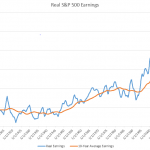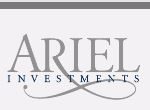In case you’re wondering, here is the Observer’s mission:
The Mutual Fund Observer writes for the benefit of intellectually curious, serious investors— managers, advisers, and individuals—who need to go beyond marketing fluff, beyond computer- generated recommendations and beyond Morningstar’s coverage universe … Our special focus is on innovative, independent new and smaller funds. MFO’s mission is to provide readers with calm, intelligent arguments and to provide independent fund companies with an opportunity to receive thoughtful attention even though they might not yet have drawn billions in assets. Its coverage universe has been described as “the thousands of funds off Morningstar’s radar,” a description one fund manager echoes as “a Morningstar for the rest of us.”
Morningstar is in the business of helping investors. Since most investors have most of their money in large funds, that’s where Morningstar spends their time and energy. By way of illustration, Morningstar has published reviews of 530 funds in 2016. Of those, 450, or 85%, have assets under management of more than a billion. The median size for all reviewed funds, including those that haven’t been reviewed in the past five or ten years, is about $1.5 billion. The median size for all funds, not just those reviewed, is about $220 million. To be clear: there are 3400 funds with less than $220 million in assets, of which 24 (0.7%) have received analyst coverage in the past 12 months.
That’s not a criticism, it’s a business model. Morningstar needs to follow the money because that’s where the vast bulk of the paying customers are. The Observer, both noncommercial and nonprofit, has the freedom to go where Morningstar cannot; a complement rather than a competitor, mostly yin to their mostly yang.
At the same time, the folks at Morningstar maintain some level of vigilance toward smaller, newer funds. That’s embodied in the Morningstar Prospects list and in an annual “undiscovered managers” panel at the Morningstar Investor Conference. This year’s undiscovered managers were:
Rupal Bhansali of Ariel Funds. Rupal’s two Ariel funds (Global AGLOX and International AINTX) have five year records and about a quarter billion in AUM but Ms. Bhansali herself has been managing for 21 years and overseas hundreds of millions more in separate accounts.
Jonathan Bloom, representing the team-managed FMI Funds. FMI International (FMIJX), for which he was being recognized, holds $4.4 billion and has a six-year record.
Andrew Foster of Seafarer Funds. Andrew’s Seafarer Overseas Growth & Income Fund (SFGIX) has $1.4 billion in assets and a four year record which builds on his decade of work at Matthews International.
In this case, on average, you can become “undiscovered” after you have $2 billion in assets and a five year record as a fund and a ten or fifteen year record as a manager. They all richly deserve the recognition. We profile Ariel Global below and have written repeatedly about Seafarer. In truth we should have begun coverage of FMI around the time we launched, but I screwed up and the fund is outside of our coverage universe (roughly defined as “funds off Morningstar’s radar”) now.
Morningstar also published two articles this month on the subject of undiscovered funds; the sort of “not ready for prime-time” crew that Morningstar’s keeping an eye on for you. After torching the strawman argument that most new funds aren’t worth much attention (uhhh … (a) we agree and (b) we think that’s true of most old funds, too. The Observer’s argument from the moment we launched is that 80% of all mutual funds could be shuttered with no loss to anyone except the folks drawing fees from them), Morningstar offered some off-the-radar possibilities for you.
In “These Mutual Funds Are New but Still Worthy” (07/27/2016), Christine Benz identifies three from the handful “worthwhile mutual funds” launched recently. They are:
| Launch date | ||
| Mairs & Power Small Cap MSCFX | August 2011 | Our 2011 profile, drawing on my remarkably low-key conversation with the manager, concludes “There’s simply no reason to be excited about this fund. Which is exactly what Mairs & Power wants. Small Cap will, almost certainly, grow into a solidly above-average performer that lags a bit in frothy markets, leads in soft ones and avoids making silly mistakes. It’s the way Mairs & Power has been winning for 80 years and it’s unlikely to change now.” |
| Meridian Small Cap Growth MSGGX | December 2013 | Our 2014 profile looked at Mr. Schaub and Meade’s long record at Janus Triton and argued “While the track record of the fund is short, the record of its managers is long and impressive. Investors looking for intelligent, risk-managed exposure to this important slice of the market owe it to themselves to look closely here.” |
| Seafarer Overseas Growth & Income SFGIX | February 2012 | Our original 2012 profile, twice updated, concluded “Mr. Foster is remarkably bright, thoughtful, experienced and concerned about the welfare of his shareholders … He’s a good manager of risk, which has made him a great manager of returns. The fund offers him more flexibility than he’s ever had and he’s using it well. There are few more-attractive emerging markets options available.” |
It turns out that if you have a highly accomplished manager who leaves a large fund to launch a small one, you’ve got an awfully good prospect for success. Likewise, if you’ve got a firm that never launches new funds and then they launch a new fund, you’ve got an awfully good prospect for success. It’s never been clear to us why you’d approach such managers as if they were amiable bumpkins recently tumbled from the turnip truck, waiting for years before acknowledging that they were even off-the-radar (but close).
Dan Culloton, associate director of equity manager research, offers a larger list 10 Under-the-Radar and Up-and-Coming Funds (7/26/2016) which strike the Morningstar analysts as “intriguing, little-known or new.”
| Goldman Sachs ActiveBeta U.S. Large Cap Equity ETF (GSLC) | The funds low vol plus price momentum strategy earned an incredibly tepid endorsement: “The ETF’s 0.09% expense ratio is less likely to erode whatever modest performance advantage it might offer.” Uhhh… if that’s it, why bother? |
| AQR Long-Short Equity (QLEIX) | Three years old, top 1% since launch plus $1.4 billion in assets. It’s your basic AQR black box. Frankly, if I had fund radar and funds with a billion in assets were under it, I’d invest in new radar. |
| LoCorr Market Trend (LOTIX) | Two-year-old fund based on a 10-year-old hedge fund, $1.4 billion in assets. It’s a managed futures fund that benefits from the fact that most of its peers are rolling wrecks. NAV peaked in April 2015, down about 7% since. |
| AC Alternatives Market Neutral Value (ACVKX) | Five years old market-neutral fund with $715 million and a manager who oversees $25 billion. It uses a pair-trading strategy where it would, for example, balance a long position in one carmaker with a short position in another. The goal is 300-400 bps above cash with zero market correlation. With annual returns of 2-4%, they’re right in the range. If you find the strategy attractive, consider acting now. The manager expects to close at below $1 billion. |
| Columbia Acorn Emerging Markets (CATIX) | This five-year-old fund closed in July 2014 with $575 million in assets and reopened in February 2016 at about one-third of that amount. Over that same period, it lost about 30%. Because Morningstar doesn’t break out small- to mid-cap EM funds (or EM balanced funds) separately, CATIX looks worse than it is. It’s a solid, risk-sensitive fund in a very volatile niche. |
| Rainier International Discovery (RAIIX) | Nice fund, $215 million, three year record but the load-waived shares are a bit scarce. It’s managed by Henrik Strabo who ran American Century International Discovery for about 20 years, then bounced around a bit: Touchstone, GuideMark, Clough, Rogge, but never for more than a year or two. Odd. |
| Queens Road Small Cap Value (QRSVX) | Our profile concludes, “Based on his record over the past 13 years, Mr. Scruggs has earned the designations patient, disciplined, successful. If you aspire to the same, the two Queens Road funds should surely be on your due-diligence list.” Yep. |
| JPMorgan Global Allocation (GAOSX) | $1.4 billion and 5 years old. That seems to be some sort of sweet spot for “under the radar but not too far under.” Morningstar defaults to sharing the institutional class ticker which, in several cases, as here, adds a star or two to the rating. |
| T. Rowe Price Global Allocation (RPGAX) | We might have misunderestimated RPGAX. When we profiled it in 2013, we concluded “Investors who have traditionally favored a simple 60/40 hybrid approach and long-term investors who are simply baffled by where to move next should look carefully at RPGAX. It doesn’t pretend to be a magic bullet, but it offers incredibly broad asset exposure, a modest degree of opportunism and a fair dose of risk hedging in a single, affordable package. In a fund category marked by high expenses, opaque strategies and untested management teams, it’s apt to stand modestly out.” Oops. I forgot how dismal the average world allocation fund is. RPGAX is substantially stronger than its peers, though it consistently trails other plausible comparisons such as Vanguard STAR (VGSTX) and Leuthold Core (LCORX). |
| CRA Qualified Investment (CRANX) | $2 billion and nine years old. In late 2013 we noted “Virtue has its price: The Community Reinvestment Act requires banks make capital available to the low- and moderate-income communities in which they operate. That’s entirely admirable but the fund’s investors pay a price: it trails 90% of its intermediate-bond peers.” Through the magic of standard reporting periods (1, 3, 5 years) plus a couple okay years of late, the bad years have vanished from the ratings and its 3- and 5-year returns are 20-40 bps above average. Supporting community redevelopment is a very good thing, just do it with your eyes open. |
Bottom line: not all investors have the freedom to consider truly new funds. For many investors, policy or principle requires them to wait three to five years, to hold off until a fund crosses an asset threshold (e.g., $250 million minimum) or demonstrates high liquidity or a capacity-unconstrained strategy (i.e., the ability to quickly absorb and return huge amounts of money without disrupting the market or strategy). The Morningstar Prospects list is a valuable tool for helping such investors find relatively small, relatively new opportunities that might otherwise be lost in the noise. If you’re in that camp, you should try to track down a subscription.
Investors who are unconstrained by such arbitrary rules might find useful leads here three years and a billion dollars sooner.











